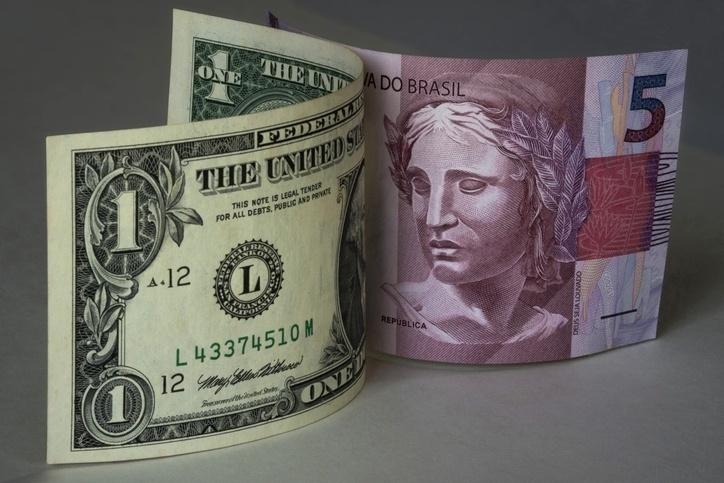RIO DE JANEIRO, BRAZIL – The dollar abandoned the firm uptrend from the beginning of the day. It began to fall on Thursday, July 8, with the market strongly influenced by the sale of half a billion dollars by the Central Bank in foreign exchange swap contracts.
Since March, it was the first net offer of the type after the price jumped above R$5.30 in the late morning. At 4:45 pm, the spot dollar was up 0.27% to R$5.25 on sale.
The rally earlier in the day occurred in line with the sell-off of emerging currencies and other risk assets on Thursday amid renewed fears about the pace of global economic recovery. The tougher political climate in Brazil also added to the pressure, and the dollar even rehearsed an eighth consecutive rise.
The Central Bank announced the swap sale operation at 11:40 am (Brasília time), exactly when the dollar hit the session’s high (R$5.3146 – up 1.44% at that moment).
Immediately after, the currency fell to 5.2780 reais. Subsequently, the dollar continued to lose strength and, after the auction was announced, began to show a drop of 0.37%, to 5.2196 reais, the minimum quotation of the session.
“The dollar operating above 5.30 reais called the attention of the Central Bank,” said Vitor Péricles, chief strategist at Laic Asset Management. “(The BC) is acting with derivatives (swaps) to contain volatility,” he added.
The last time the BC had announced a net offer of currency swaps was on March 12, when the dollar was around 5.55 reais.
Péricles also remembered the real devaluation since the dollar touched the minimum of June, around R$4.90, a level considered by him as “euphoric”. “The market had exaggerated to go below R$5.00,” he said.
Considering the dollar future, the real depreciated 8.1% (while the dollar rose 8.8%) between the recent minimum quotation of the US currency on June 25 (4.896 reais) and the peak this Thursday (5.327 reais).
EFFECTS FOR CENTRAL BANK’S COPOM
In the market, the Central Bank’s intervention in the exchange rate raised questions about an eventual acceleration of the pace of the SELIC interest rate in the August 3-4 Copom meeting. According to some financial agents, the Central Bank left room in the latest Copom minutes to intensify the monetary normalization process, with an eventual increase of one percentage point in the Selic: the basic rate would jump from 4.25% to 5.25% per annum.
With the action of the Central Bank, the Brazilian Real is now in the middle of the performance table among 33 other countries, after being among the worst positions. At the end of the morning, the Brazilian currency had the best performance among its closest peers, which were still suffering from the flight from risk assets that still brought down stock markets around the world.
The yen and the Swiss franc, traditional safety assets, jumped 0.7% and 1.1%, respectively, at the top of this session’s global exchange markets.


